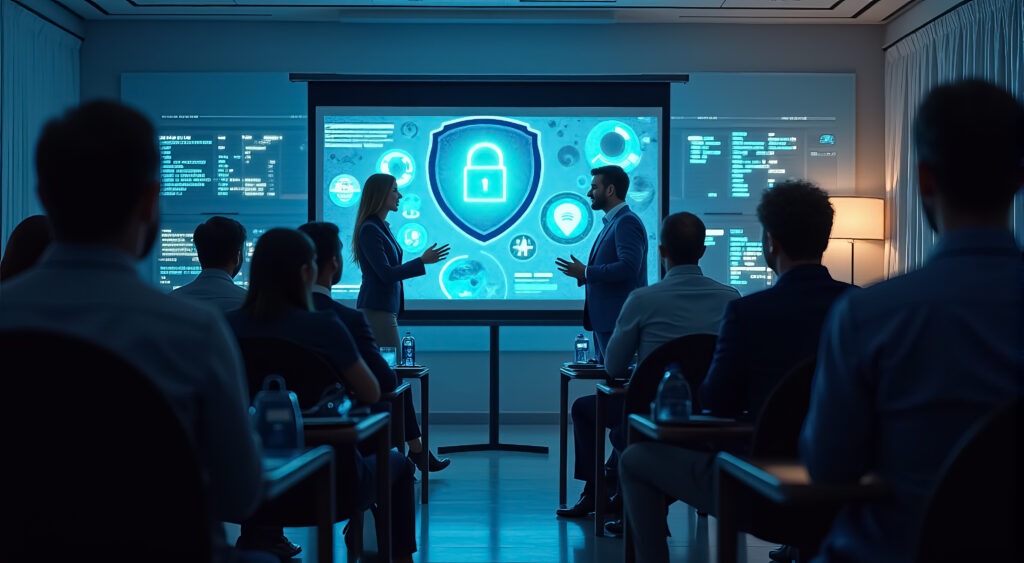
Have you ever wondered how secure your team’s communication is, especially with the rise of remote work? As businesses adapt to the growing trend of remote teams, ensuring that communication is not only efficient but secure has become a priority. The convenience of digital tools is undeniable, but what happens if they are not secure?
From data breaches to unauthorized access, the stakes are high. This article will explore the best practices for securing remote team communication, why it’s crucial, and how you can implement these practices to protect your business.
The Rise of Remote Work and Its Security Challenges
1. Why Remote Communication Needs to Be Secure
The sudden shift to remote work caught many businesses unprepared. This transition brought along security concerns that weren’t as prevalent in traditional office settings. Remote teams rely heavily on digital communication platforms, from messaging apps to video conferencing tools. Without proper security measures, sensitive company data, client information, and internal strategies could be at risk.
2. Real-Life Scenario: XYZ Digital
Imagine a fictitious company, XYZ Digital, a marketing agency with a team of 50 remote workers spread across different countries. They use various communication tools to collaborate on client projects. Initially, they didn’t implement robust security measures, assuming that password protection was enough. However, a data breach occurred, leaking sensitive client information and leading to significant financial losses.
XYZ Digital realized they needed to secure their communication channels with encryption and tighter access controls to prevent future breaches. They upgraded their systems, applied encryption to all communication, and adopted secure collaboration tools, which drastically reduced security threats.
Best Practices for Securing Remote Team Communication
1. Use End-to-End Encryption
End-to-end encryption ensures that messages and data exchanged between team members are encrypted at the source and can only be decrypted by the recipient. This is a critical feature for businesses that handle sensitive information, ensuring that no unauthorized person can intercept or read messages.
- Tip: Implement end-to-end encryption across all communication platforms, including messaging apps, video calls, and file-sharing services.
2. Multi-Factor Authentication (MFA)
Multi-factor authentication adds an extra layer of security by requiring users to verify their identity through multiple methods, such as a one-time code sent to their mobile device. This drastically reduces the chances of unauthorized access, even if login credentials are compromised.
- Best Practice: Ensure that MFA is mandatory for all team members accessing company communication platforms.
3. Secure File Sharing Solutions
Remote teams often share documents, images, and videos across various platforms. Using unsecured platforms increases the risk of data leaks. Secure file-sharing solutions that offer encryption and access controls are essential for protecting confidential files.
- Recommendation: Use secure cloud storage services with encryption to store and share sensitive documents within your team.
4. VPN for Remote Access
A Virtual Private Network (VPN) provides a secure connection between a user’s device and the company’s network. It ensures that data transmitted over public networks is encrypted, preventing unauthorized access.
- Pro Tip: Encourage all remote employees to use VPNs, especially when connecting from public Wi-Fi networks.
5. Regular Security Audits
Conducting regular security audits ensures that your communication systems are up-to-date and compliant with the latest security protocols. These audits help identify vulnerabilities and areas that need improvement.
- Tip: Schedule monthly security audits to review encryption protocols, access controls, and other security features in your communication systems.
The Role of Compliance in Securing Remote Communication
For industries like healthcare, finance, and legal services, compliance with regulations like HIPAA, GDPR, or FINRA is non-negotiable. Failing to comply with these regulations can result in hefty fines and damage your company’s reputation.
1. Ensure Compliance with Data Protection Laws
Make sure that all communication tools used by your team comply with relevant data protection regulations. This includes ensuring that all data is encrypted, stored securely, and only accessible by authorized personnel.
2. Internal Policies for Data Access
Create and enforce internal policies that limit data access based on roles within your organization. Not every team member needs access to all information. By segmenting access, you minimize the risk of data breaches.

Real-World Story: How Secure Communication Saved TechFlex IT
TechFlex IT, a fictitious global IT consulting company, had a massive project with a high-profile client. As their teams were spread across different time zones, they relied heavily on remote communication tools. Initially, they faced issues with securing communication, leading to a minor data leak.
After this incident, they switched to encrypted messaging and implemented strict access controls, ensuring that only the necessary personnel had access to the most sensitive data. They also mandated MFA for all remote workers, ensuring that even in the case of compromised passwords, unauthorized access was prevented.
Their proactive approach not only prevented future breaches but also helped them retain client trust and win new contracts.
Steps to Secure Remote Team Communication
1. Adopt Secure Communication Platforms
Look for platforms specifically designed with security in mind. Choose solutions that offer end-to-end encryption, MFA, and secure file sharing. Avoid free or public platforms that may not provide adequate protection.
2. Employee Training on Cybersecurity
Employees are often the weakest link in security. Provide regular training on the importance of secure communication practices, recognizing phishing attacks, and properly handling sensitive information.
- Tip: Hold quarterly cybersecurity training sessions to refresh employees on the latest threats and security best practices.
3. Regularly Update Communication Software
Ensure that all communication software used by your team is updated regularly. Software updates often include critical security patches that fix vulnerabilities.
What Happens If You Don’t Secure Remote Communication?
Imagine your business facing a data breach where client information, sensitive business data, and internal documents are exposed. The aftermath of such an incident can be disastrous, leading to:
- Reputational Damage: Clients may lose trust in your ability to protect their data.
- Financial Loss: The cost of dealing with a data breach can be substantial, including fines and legal fees.
- Operational Disruption: A breach can disrupt business operations, slowing down projects and damaging productivity.
How Could It Be Better? Strengthening Remote Communication Security
To ensure that your communication channels remain secure, consider these additional steps:
- Behavioral Analytics: Monitor user behavior on communication platforms to detect unusual patterns that might indicate a breach.
- Advanced Encryption Methods: Stay ahead of threats by upgrading to the latest encryption protocols.
- Cloud Security: Ensure that any cloud-based communication platform follows strict security guidelines, including encryption at rest and in transit.
The Future of Remote Team Communication Security
As remote work continues to grow, the need for secure communication will only increase. Technologies such as AI-based threat detection, blockchain for secure transactions, and zero-trust security models will play a pivotal role in shaping the future of secure remote communication.
Businesses need to stay ahead by adopting these technologies and implementing strict security measures. Protecting your team’s communication is not just a matter of compliance—it’s about ensuring your company’s long-term success.
Table of Contents
Securing remote team communication is not optional; it’s a necessity in today’s digital age. With threats constantly evolving, businesses must remain proactive in protecting their communication channels. By implementing end-to-end encryption, using secure file-sharing platforms, and regularly conducting security audits, you can ensure that your team’s communication remains secure, efficient, and compliant.
Don’t wait until it’s too late—take the steps now to secure your remote team communication and protect your business from potential threats.






